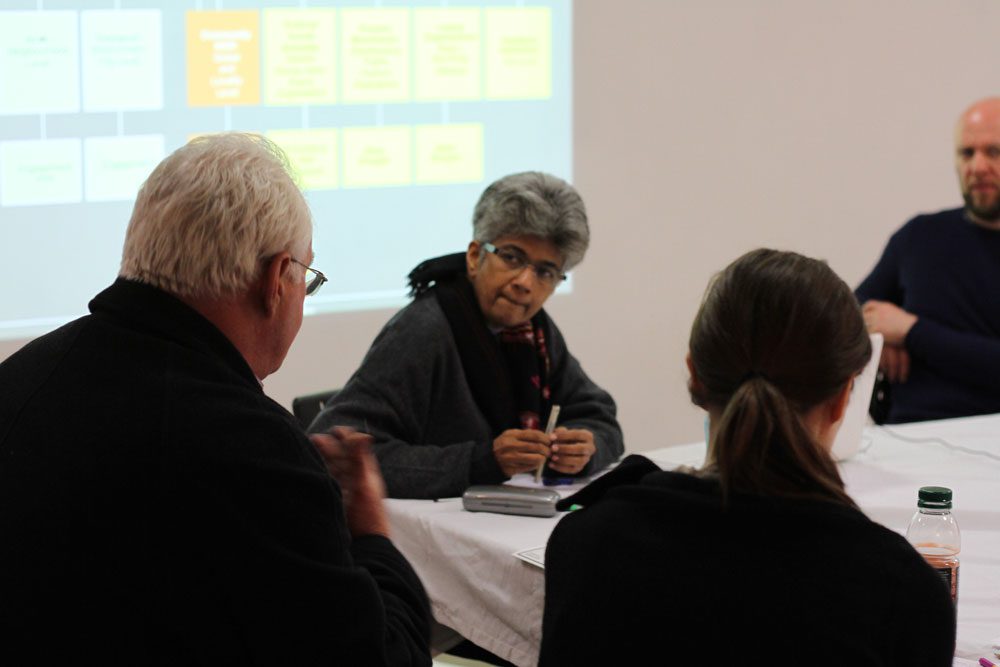Inivator Tara Brown discovers the plight of the mill workers in Mumbai

I was kindly invited to the Labour relations discussion and workshop – this was led by Iniva’s curator Grant Watson and Neera Adarkar, an amazing woman who has been involved in the urban struggles of the mill workers in Mumbai.
I rushed in 15 minutes late, to watch a film on YouTube about the decline of the mills in Mumbai and the anxieties the workers had, including their living space, and the financial future for their children.
When the film had ended, the lights came back on and everyone could introduce themselves. The majority of people were involved in textiles and industry in some way, as artists, practitioners or working within charities that involved crafts, and people (like me) generally interested about the exhibition and issues it highlighted. There were also people who had come from industrial towns where mining used to be the local economy. The workshop was more like a discussion, salon-style presentation as Neera talked about the history of the struggles, highlighting the essential conflict between declining industries, civil rights and urban planning.

Showing a map of the mill lands in Mumbai, and how the classes organised themselves, Neera told us about how globalisation moved the mills away from Mumbai to other parts of the world and the resulting land grab where there was an alliance of civil rights activists, feminists, environmental rights groups and mill workers against the mill owners. The empty factories gave rise to a creative middle class who used them as galleries and creative spaces, before the factories were sold off as the land in Mumbai became more prosperous.
I couldn’t help but see some parallels to Shoreditch, where there are so many galleries and creative projects in a factory/industrial setting, along with waves of middle class people and rising prices pushing old industries out of the city. I had discovered with many others during the Social Archive project with Shiraz Bayjoo, where we talked to new and old businesses in the area.
Further parallels were also found when talking about towns in Britain such as within Lancashire and Paisley, where the towns had suffered following the decline of the mills. Young people in Mumbai, Lancashire and Paisley were all leaving the towns they grew up in, towns that resembled each other, with the universal towers and shapes of the factory – these places in France, India and Britain all resembled each other in images in the slide-show; the group were surprised and intrigued by that. It clearly presented that the themes of urban change and poverty were universal and through uniting on issues like these, it’s far easier to understand people along these lines.
It brings to mind the last lines of the song played in the youtube video: “Oh brother, for how long will you watch?”
For now, it’s the last week of the Social Fabric exhibition, so have a look and let me know in the comments if you see what I see…